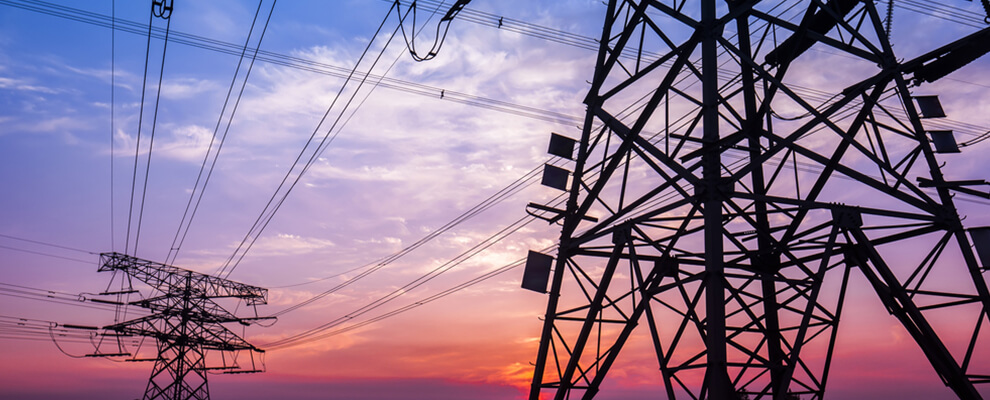Climate change continues to advance despite global efforts to reduce carbon emissions and halt rising temperatures. Although many investments into renewable energy sources have been made, many regions have yet to make necessary changes to their energy transmission infrastructure. Improving the grid is vital for reducing energy waste and maximizing the benefits of renewables. Why do utilities need to invest in better infrastructure, and what upgrades will have the biggest impact on energy efficiency?

The Role of Energy Transmission in Fighting Climate Change
Upgraded Transmission Equipment Reduces Grid Losses
Even though much of the climate change discussion revolves around using better energy sources, the impact of energy transmission equipment cannot be understated. Transmission and distribution (T&D) will always result in some energy loss. However, an up-to-date grid with the latest equipment can greatly diminish energy loss, thereby reducing overall emissions as energy demand drops. Just how much of a difference can there be?
A developed grid like that of the United States has an estimated T&D loss of about 5%. However, that national average hides the fact that some states’ T&D losses are as much as six times greater. For instance, Wyoming’s infrastructure wastes a meager 2.2%, while Idaho loses 13.3% of its power to T&D. In the Middle East, energy infrastructure is long due for replacement. The MENA region overall loses around 14% of its electricity in transmission. What needs to change?
Smarter Devices Optimize Power Transmission
To reduce T&D losses, utilities need to adopt smart grid technology. Smart devices transmit digital data regarding energy use back to the utility company. When coupled with data analytics software, utilities can better direct the flow of electricity and mitigate losses. Existing grids balance loads indiscriminately, which unintentionally leads to waste. For example, it may be best to redirect electricity down higher quality lines to reduce waste, but the grid may spread that distribution out, using less efficient routes.
Advanced metering infrastructure is recommended for upgrades and new installations. Smart meters on residences and businesses can give utilities a much clearer picture of where energy needs to go and when. Monitoring devices on electrical lines and transformers can be installed at periodic intervals to give utilities more control over distribution routes. These devices also help utilities identify problems faster, which means quicker repairs and less waste due to decaying hardware.
Decentralizing Energy Transmission to Include New Sources of Electricity
Upgrading existing transmission and distribution systems, while necessary, won’t be enough. The entire energy distribution network needs to be rethought and reconfigured to facilitate the adoption and effective use of new sources of electricity. Most national grids are highly centralized; large power plants act as energy hubs, with distribution lines sprawling outward. Although this made sense for the 20th century, today’s grid has new needs. Renewable energy sources, for example, may be produced anywhere.
A modern grid needs to see individual users as more than consumers. Smart energy meters can allow energy consumers to also become energy producers. A home that installs a solar roof can contribute to the grid when smart technology is implemented. A rural farm could take advantage of wind power and likewise put energy back into the grid. Building this decentralized infrastructure encourages users to participate, making the grid more efficient and resilient.
Renewable Energy Requires New Transmission Methods
While individuals and businesses can implement small-scale renewable systems, the most meaningful efforts will come from large-scale investments into renewables at the national level. These large projects demand new transmission networks. For example, Saudi Arabia has committed to producing 50% of its energy from renewable sources by 2030, primarily by investing in solar and wind power. Large solar and wind farms may be located far away from urban areas where over 80% of the population lives. What’s the solution?
Since solar and wind output direct current, they naturally pair well with high-voltage direct current transmission lines. Saudi Arabia’s latest planned city, Neom, is going to run entirely off of renewable energy, with excess to spare. Therefore, the country has called for HVDC lines to be built, with Hyundai winning a $145 million dollar contract to do so. Developing your company’s capacity to design and build these new transmission routes will be vital for success going forward.
A Collective Effort to Combat Climate Change
As climate researchers continue to sound the alarm that we are quickly passing the point of no return, a collective effort is needed to avoid the worst effects of climate change. New sources of energy are needed. The participation of individuals and businesses in adopting renewables is vital. Energy T&D losses must be reduced, and the grid needs to be modernized to link all of these initiatives together.
As the cost of these new technologies falls, governments will increase their investment in them. However, if your company wants to take advantage of this shift in energy investment, you need to be competitive. Not only do you need knowledge and a skilled team, but you also need a digital business environment to reduce your operating costs and provide more value than your competition.
Complete a Digital Transformation of Your Operations
Going digital is more than using smart devices on your projects. Your entire company needs to embrace a digital workflow that allows you to derive insights from data. You can optimize your staff’s activities, perform proactive maintenance, and ultimately increase your profits.
Work with an experienced digital transformation consultant to find the best way to transform your business and be ready to secure more lucrative contracts in the modern energy market. Contact SAAB RDS to learn more about how we can help you.
